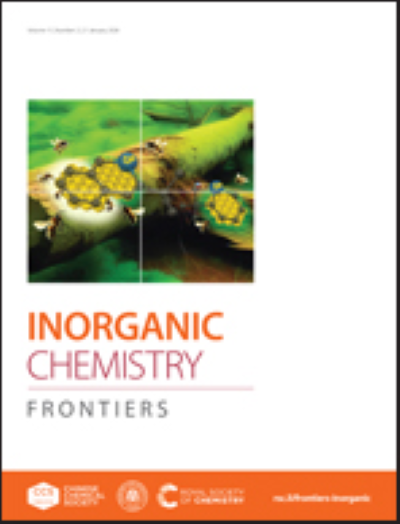Engineering geometric metamorphosis in {P6M2Mo16O73}-based high-nuclearity metal superclusters: from tetrahedral to square assemblies via topological transformations
IF 6.1
1区 化学
Q1 CHEMISTRY, INORGANIC & NUCLEAR
引用次数: 0
Abstract
The synthesis of superclusters is vital for understanding their self-assembly mechanisms, requiring precise control over composition, orientation, and connectivity. The tenets of reticular chemistry afford a systematic approach to the architectural design and regulation of molecular entities, thereby enabling the fulfillment of preconceived structural objectives. Herein, the strategic introduction of transition metal ions, CoII and NiII, has enabled the controlled formation of two novel closely related anionic superclusters based on the {Sr⊂P6M2Mo16O73} clusters: Co12Sr4Mo80P36 (1) and Na4Ni23Sr4Mo88P52 (2). The former manifests a tetrahedral structure, while the latter, derived from topological transformations of cluster 1, exhibits a unique square geometry. Structural elucidation revealed that the integration of MoV ions in a reduced state, in concert with distinct transition metal ions (CoII and NiII), plays a pivotal role in determining the geometric profiles of these superclusters. Furthermore, clusters 1 and 2 demonstrate efficacy as heterogeneous catalysts, significantly promoting the transformation of methyl phenyl sulfide (MPS) to methyl phenyl sulfoxide (MPSO).

求助全文
约1分钟内获得全文
求助全文
来源期刊

Inorganic Chemistry Frontiers
CHEMISTRY, INORGANIC & NUCLEAR-
CiteScore
10.40
自引率
7.10%
发文量
587
审稿时长
1.2 months
期刊介绍:
The international, high quality journal for interdisciplinary research between inorganic chemistry and related subjects
 求助内容:
求助内容: 应助结果提醒方式:
应助结果提醒方式:


